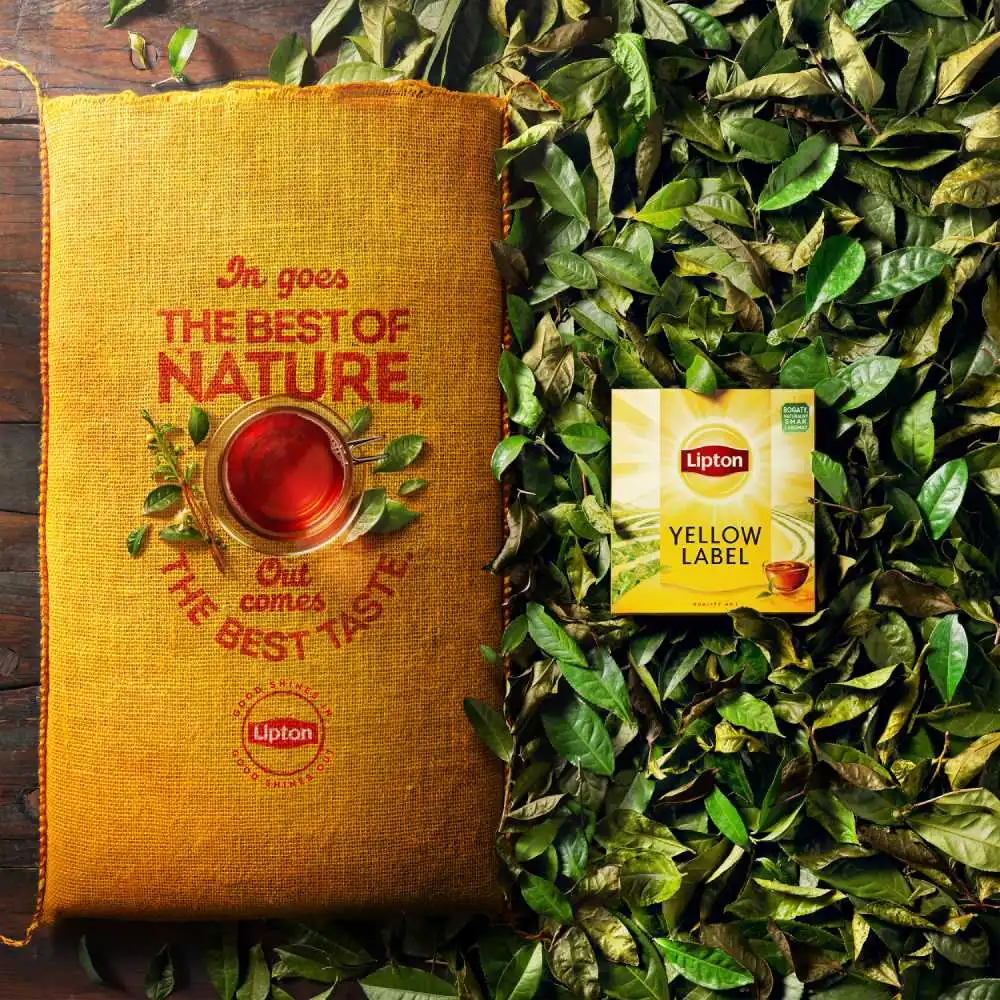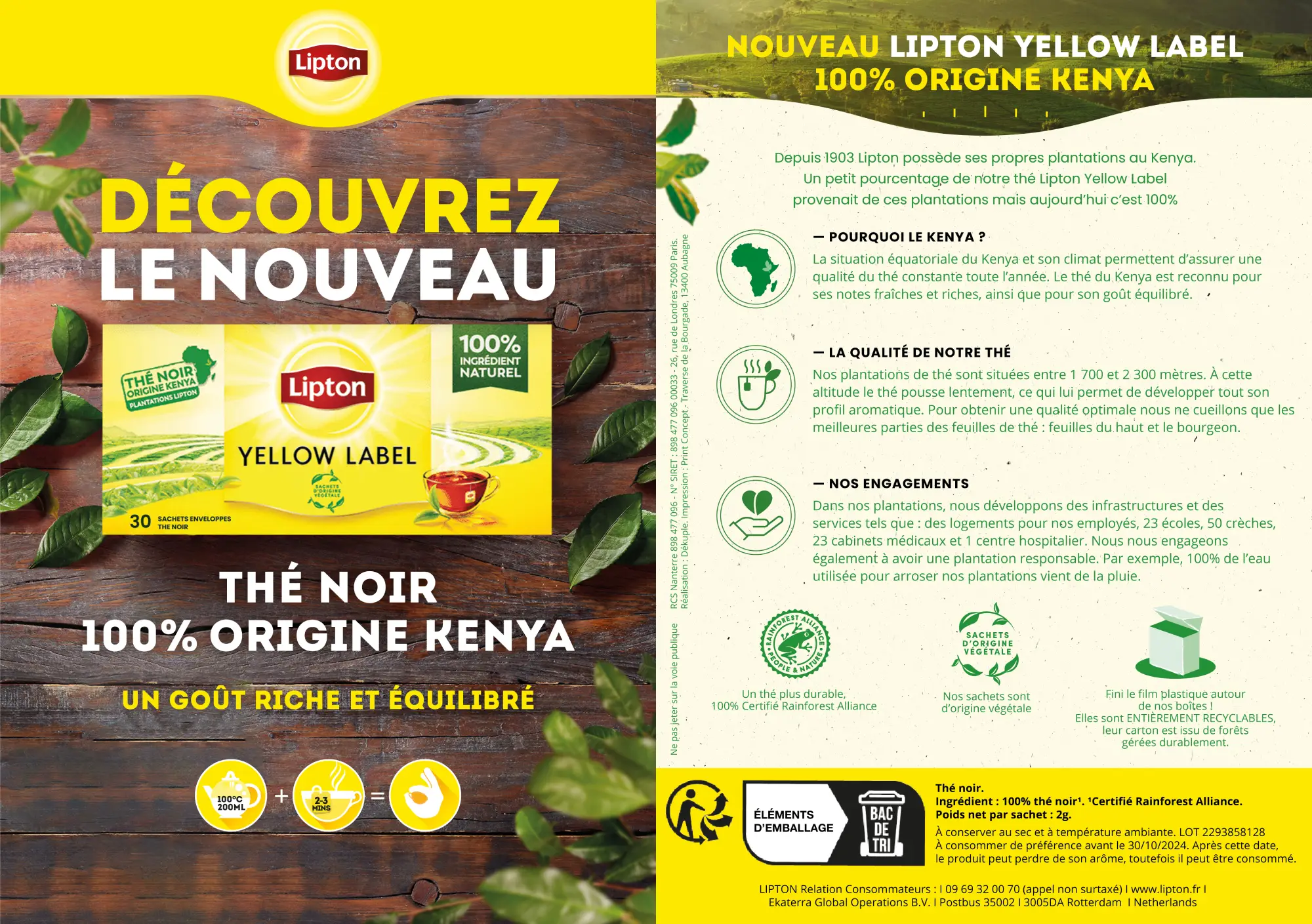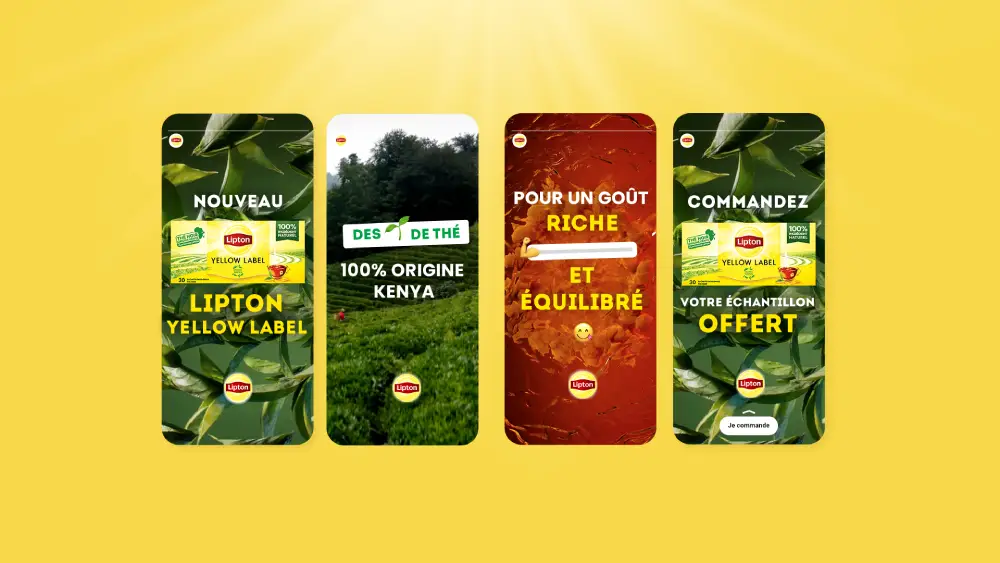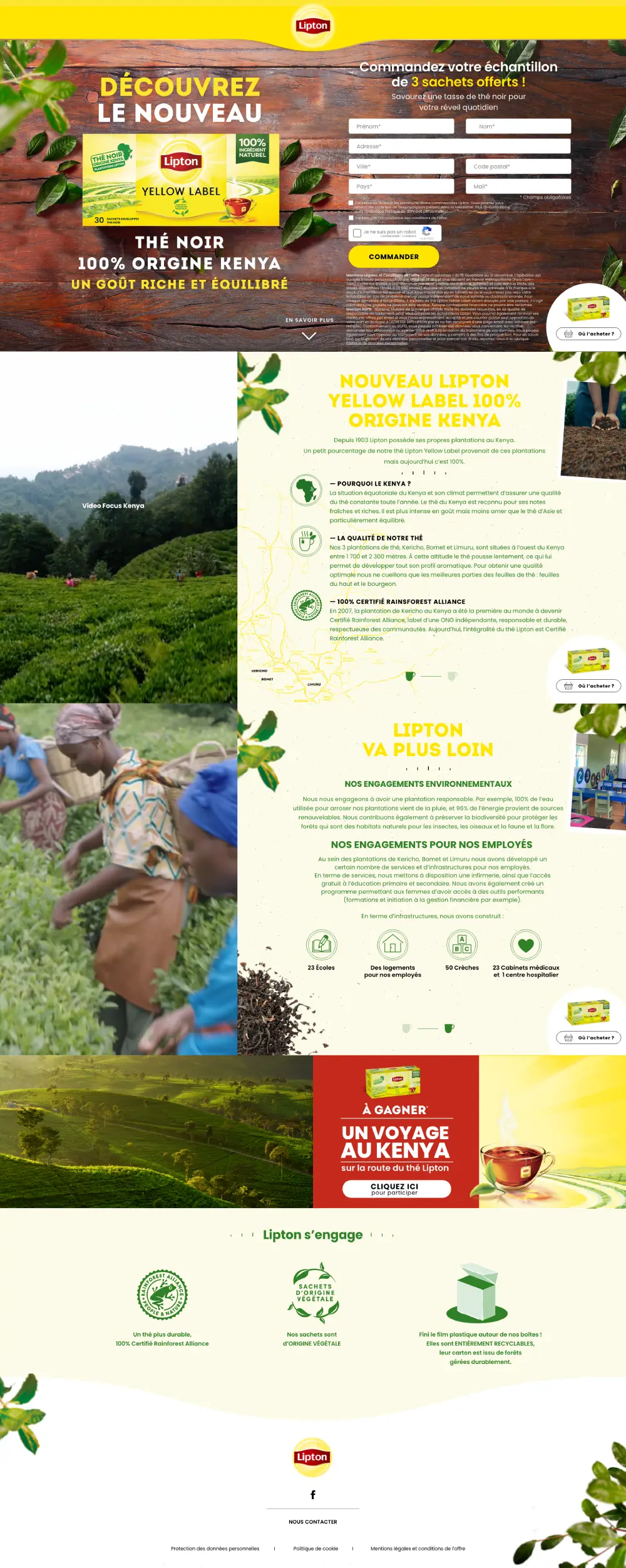In the consumer products sector, sampling remains an extremely effective marketing technique to raise awareness of a product when it is launched, and above all to convince consumers of its quality. With the evolution of digital marketing, this technique has evolved to offer new possibilities and greater relevance in targeting. Here are some concrete examples of how digital and data marketing are making product sampling strategies more and more efficient, taking the example of Lipton’s Yellow Label launch campaign (for which here is the case study summarized).
1. Combine e-sampling and packaging for more impact
E-sampling and packaging are two marketing techniques that can be used together to maximize the impact of your promotional strategy.
- Including products directly in e-commerce packages is a first way of doing sample marketing. For this, the brand partners with an e-commerce partner (marketplace or large e-retail brand) with the ability to quickly reach a large audience corresponding to the targeting criteria of the brand wishing to distribute its samples. It allows you to reach a guaranteed, targeted volume, at an optimized shipping cost since the logistics are already provided by the e-merchant partner.
- E-sampling consists of sending product samples to users who have made the request via a digital channel (website, email). It assumes a media investment to reach the target. It makes it possible to guarantee the interest of the recipients, since they take the action of requesting the sample explicitly on the brand’s website. Nevertheless, the cost per sample is difficult to predict, because the conversion rate into a sample request depends on the quality of media targeting, the creation of the message, and the attractiveness of the product.
By combining these two techniques, the brand can ensure that it achieves two essential marketing objectives for a launch:
- make the product known, thanks to a wide distribution of the samples,
- reinforce the image of the product, in particular thanks to the digital communication campaign, which must offer to discover the product through rich content (videos, content on the web page, etc.)
2. Optimize the targeting of the sending of samples
The practice of packaging has changed with the new regulations of the Climate Law concerning the distribution of samples for commercial purposes: in fact, now, this can only be done at the request of the consumer. The objective of this law is to limit the specific production of samples and wastage. In the case of packing, this involves adding a checkbox at the time of ordering to receive a sample. Thus, whether it is e-sampling or packaging, the consent requested from the user makes it possible to optimize targeting, because the sample is only sent to people who have declared their interest.
Targeting must also be optimized upstream:
- For e-commerce shippings sample insertion, the selection of targets must be worked out with the e-merchant partner, according to the criteria it proposes. In the case of the Lipton Yellow Label campaign, the partner chosen was BazarChic: targeting of the socio-demographic profile (women aged 35 to 55) and the type of products delivered was established. Thus, the brand considered that cultural goods, for example, offer a context of use that can be associated with moments of tea consumption…
- In digital, targeting is configured in the purchase of media via platforms, in particular social media, which make it possible to target users by profile, but also by interest in product categories. Despite this targeting, in digital, it is very important to set up control rules at the level of the form (a CAPTCHA to avoid spam requests, control of the address format with the Google Places API) and in the file sample requests to detect any duplicate requests for the same household. In the case of the Lipton campaign, it was possible to measure that 5% of invalid requests could thus be avoided thanks to a check on the file.
3. Design a device combining impact and commitment
The quality and relevance of the campaign’s creative assets are also a key success factor, both on and offline. They must combine promotion of the product and an incentive to test the product.
Creation of the flyer accompanying the sample
The sending of the sample must be accompanied by a printed flyer to present the product, the creation of which must be neat. This printed medium is indeed essential for the impact in terms of image, but also to accompany the experience of trying the product, or the taste experience in the case of Lipton tea.
A media plan allowing the optimization of the distribution of the most efficient assets
The media plan must combine image and commitment. To varying degrees, all formats must promote the product, while exploiting the “call-to-action” of the sample request.
- Thus, a video component (TV, VOL) makes it possible to give pride of place to the product, while adding a tag at the end of the TV copy to highlight the sample request.
- To exploit the dimension of engagement, advertisements on social networks are perfectly suited. In the case of the Lipton campaign, different platforms (Meta, Pinterest, etc.) and above all around twenty formats (posts, carousels, stories, etc.) and variations of messages were tested in order to increase the share of distribution of the best performers. Exploiting the data, taking into account the performance on the first broadcasts is essential to guarantee the effectiveness of the social media advertising system.
4. A web page combining an attractive presentation of the product and an efficient request process
A sampling campaign generally involves the creation of a web page or a mini website, in order to present the product and collect information from sample requesters.
Although relatively simple, the creation and UX design of this landing page must be studied.
- Its content and visual design must be attractive, in order to best enhance the product, its history, its qualities, and even its moments of consumption. This presentation plays a key role in the ritual of trying the product: for effective marketing, the consumer must both get to know the product, then try it or taste it to have a complete experience and be encouraged to recommend it. around him, or to share his opinion afterwards. Here, video, photo and written content are therefore essential.
- The sample request web process must maximize the conversion rate while guaranteeing the quality of the consumer data collected. The form should be concise, simple to fill out, while performing minimal checks and requesting minimal data to identify embedded prospects. Of course, this form is also an opportunity to collect opt-in contacts for the brand.
5. Model and drive campaign performance
Campaign performance can be measured at different levels.
- First, regarding the dissemination of messages, clicks and interactions on advertising publications broadcast on display, VOL and on social networks, as well as visits to the site dedicated to the product are a first indicator, to be monitored in real time.
- Then, from an economic point of view, we must measure the cost per sample distributed. This indicator is all the more relevant with the new law on the sample by packing as each sample must now be requested. The response rate to post-sample surveys, and consumer feedback is a very useful indicator. This consumer satisfaction rate is first of all a way of refining the cost per sample: by calculating the cost per “useful” sample, i.e. delivered to consumers who are genuinely interested in the product, and who will potentially buy it.
- Finally, the qualitative content of consumer feedback must also be taken into account, as it potentially makes it possible to adapt the marketing of the product, in terms of targeting and communication. Some parcel service providers offer to integrate the sending of a survey by email to the targeted people, to carry out a qualitative survey at the end of the campaign.
6. Use sampling to collect and exploit first party data
As we have detailed in this article and in this article, first party data is both a challenge and a key issue for consumer brands.
Sampling campaigns are a fairly natural lever that these brands can use to collect first-party data. The important thing is then to capitalize on this data to build a long-term relationship with contacts: proposal of advantages, communication of interesting and useful content related to the product, contests, etc.
For example, the Lipton Yellow Label sampling campaign collected more than 20,000 qualified contacts and subscribers to brand information (optin) in just a few weeks.






